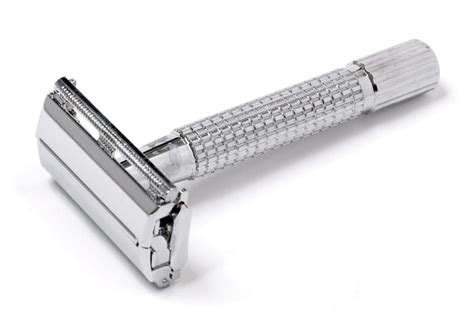DE Safety Razor: Tips & Tricks for Beginners
The world of wet shaving with a double-edged (DE) safety razor can seem daunting at first. But with a little patience and the right technique, you'll be enjoying a closer, smoother, and more sustainable shave than ever before. This guide provides essential tips and tricks for beginners venturing into the satisfying world of DE shaving.
Why Choose a DE Safety Razor?
Before diving into the how-to, let's address the why. DE safety razors offer several advantages:
- Cost-Effective: While the initial investment might seem higher than disposable razors, the blades are incredibly inexpensive, leading to significant long-term savings.
- Environmentally Friendly: DE razors produce far less plastic waste than disposable counterparts, making them a more sustainable choice.
- Closer Shave: Many users report a closer, more comfortable shave with a DE razor once they master the technique.
- A More Mindful Experience: The slower, more deliberate process of DE shaving can be a relaxing ritual.
Preparing for Your First DE Shave: Essential Steps
1. Choosing the Right Razor: There's a wide variety of DE razors available, each with its own nuances. Start with a beginner-friendly model known for its gentle learning curve. Research reviews and consider options recommended for new users.
2. Selecting the Right Blades: Blade sharpness and your skin type are interconnected. Start with a well-regarded brand and experiment to find what works best for you. Don't be afraid to try different brands to determine your preference.
3. Preparing Your Skin: A warm shower or a hot towel compress softens your beard hairs, making them easier to cut and reducing irritation. This step is crucial for a comfortable shave.
4. Applying Shaving Cream or Soap: Use a high-quality shaving cream or soap designed for DE razors. Avoid using harsh chemicals or overly scented products. Lather generously, ensuring full coverage of the shaving area. The lather acts as a lubricant, reducing friction and preventing razor burn.
DE Safety Razor Shaving Technique: A Step-by-Step Guide
1. The Angle: This is the most critical aspect of DE shaving. Hold the razor at a shallow angle (around 30 degrees) to the skin. Too steep, and you risk cuts; too shallow, and you'll get a poor shave. Practice finding the right angle in front of a mirror.
2. Short, Light Strokes: Avoid long, sweeping strokes. Use short, light strokes, following the direction of hair growth. This minimizes irritation and prevents ingrown hairs.
3. Rinse Frequently: Rinse the razor frequently under running water to remove accumulated hair and shaving cream. This ensures a clean shave and prevents clogging.
4. Multiple Passes (Optional): For a closer shave, you may opt for multiple passes. The first pass should always be with the grain (in the direction of hair growth). Subsequent passes can be made against the grain (in the opposite direction), but proceed with caution, as this can be more irritating.
5. Aftercare: After shaving, rinse your face with cool water to close your pores. Apply a soothing aftershave balm or lotion to moisturize and prevent irritation.
Troubleshooting Common DE Shaving Problems
H2: How can I prevent razor burn?
Razor burn results from excessive friction. Ensure you're using a good quality shaving cream or soap, maintaining the correct razor angle, and using short, light strokes. Multiple passes should be approached cautiously, starting with the grain.
H2: What should I do if I cut myself?
Minor nicks are common, especially when starting. Apply gentle pressure with a clean cloth or alum block to stop the bleeding. Always use a clean, sharp blade.
H2: Why is my shave not close enough?
This often stems from improper technique. Pay close attention to the razor angle, ensure thorough lathering, and try multiple passes (carefully). Experiment with different blades to find one that works best for your beard and skin.
H2: How often should I change my blades?
Blade sharpness diminishes with each use. Most users change their blades after 5-7 shaves, but this can vary depending on beard thickness and personal preference. When you notice pulling or irritation, it's time for a new blade.
Conclusion
Mastering the DE safety razor takes time and practice. Be patient with yourself, and don't be discouraged by initial challenges. With persistence, you'll discover the benefits of a closer, smoother, and more sustainable shave. Embrace the ritual, experiment with different techniques and products, and enjoy the journey to a superior shave!

